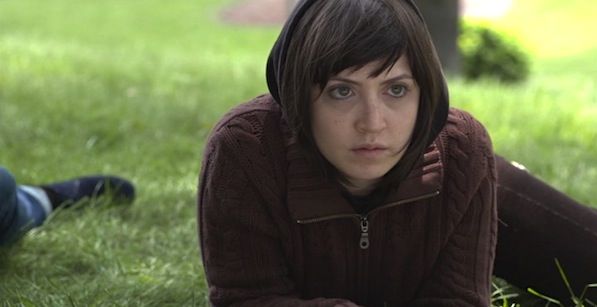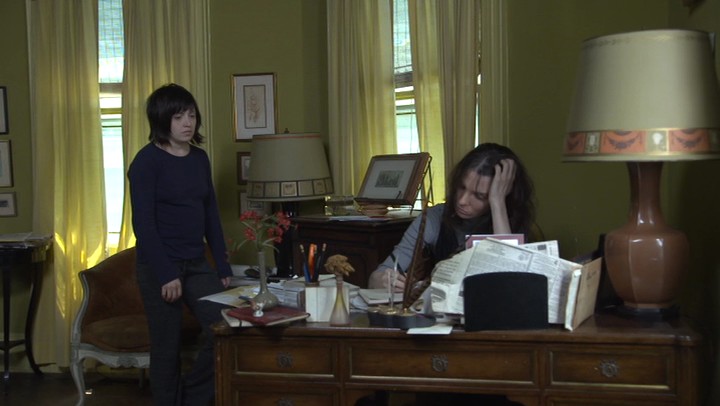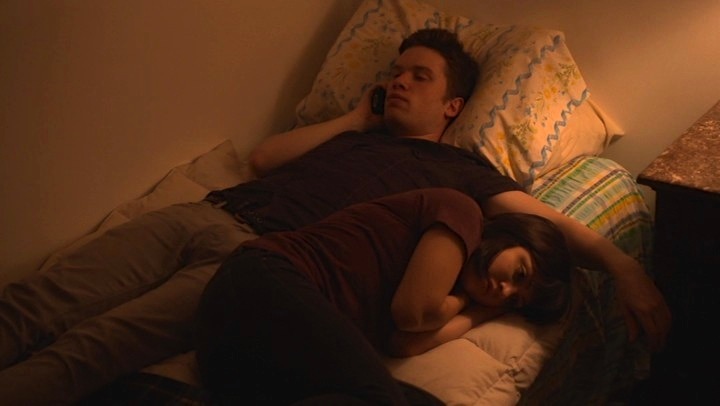Dan Sallitt, director of The Unspeakable Act, gives a good interview—thoughtful and articulate, but in a rather jocular spirit. A former staff critic for the Los Angeles Reader, he is uncommonly well-equipped to elucidate his own work, drawing as much on his experience as a voracious life-long reader of films as a now four-time author of them. I’ve interviewed enough filmmakers to know that this is a rare and valuable quality. In early August, I conducted a live Q&A with Sallitt, following a presentation of his latest film at Double Double Land in Toronto, and in preparation I researched just about everything he’d yet said to press about the picture. This proved quite illuminating. I was struck, in particular, by his capacity to both distinguish and reconcile his intentions and their end result, which is to say that he seemed comfortable acknowledging that the film in his head was not the same one we were now seeing, and in fact was happy to speak to the apparent differences even when he couldn’t account for them.
There’s one observation, from an interview with the Notebook’s Craig Keller, that I’ve been thinking about a lot lately— not only insofar as it helps inform The Unspeakable Act but also, more broadly, how it relates to the ways we think about cinematic expression. It’s worth quoting the exchange at length:
Keller: What do you value in an actress or actor? What qualities attract you to use them for a film? What are some of the common characteristics across performers you admire in movies outside your own?
Sallitt: I hesitate to be too prescriptive about it, because it’s complex and context-dependent. I like actors who just want to exist plausibly, who don’t need to illustrate what they’re feeling. In real life we all spend 90 percent of our social energy trying to prevent other people from knowing what’s going on in our heads, so it can be difficult to use an actor who wants to signal internal states clearly.
The notion that we “spend ninety percent of our social energy trying to prevent other people from knowing what’s going on in our heads”—that we more often restrain, rather than express, how we feel at any given moment—seems at odds with both the purpose and methods of acting on stage or on camera, which generally require that a performer do more than simply “exist plausibly.” But this isn’t always the case. When we watch a film, we accept that we won’t always know what a character is thinking because that ambiguity adds suspense to the action, and how a character behaves over a sustained period of time usually clues us in retroactively. Think, for example, of Carmela Corleone’s funeral toward the end of The Godfather Part II: it isn’t immediately clear, when Michael concedes to Connie’s appeal for mercy and embraces Fredo, whether he intends to commit the fratricide he’d alluded to much earlier. Here Michael spends his social energy preventing us from knowing what’s going on in his head. A little later, when Al shoots Fredo out on the fishing boat, Michael’s feelings are finally illustrated: he never forgave his brother and planned to kill him all along.
In such cases psychology is elided in favor of suspense—a short-term strategy with a simple effect. The bigger picture typically requires more psychological and emotional explication. The perspective explanation is that is an audience needs to know what a character is feeling in order to align their emotional experiences, to empathize with whatever happens to be their dilemma. It’s somewhat reductive to put it in these terms, but the thinking is basically straightforward: the less we know about how our protagonist’s inner state—the less effectively they illustrate what they’re feeling—the less willing or able an audience will be to understand and connect with them. And here’s the simplistic but sensible explanation: Much in the same way that we accept coherent narratives not despite but because of the inscrutability of our own lives, we want a degree of transparency in our movie characters because of how difficult it is to read the thoughts and feelings of the people we encounter every day. We want, to quote Godard, the cinema to substitute for our gaze a world more in harmony with our desires—in other words we want a world we can easily comprehend.
This is a bit of a generalization, of course—the cinema has a rich tradition of psychological opacity that runs from neorealism through the modern narrative avant-garde. But it does account for what distinguishes the work of Dan Sallitt from that of many of his contemporaries. The Unspeakable Act is in many ways a fairly classical family drama and character study, a coming-of-age story about Jackie (Tallie Medel), a teenaged girl enamored of her elder brother Matthew (Sky Hirschkron) and resistant to the idea that he’s moving on. But what’s perhaps most striking about the film is that, despite being narrated in reflective voice-over by Jackie and more or less totally confined to her point of view, she remains something of a mystery throughout, seemingly unknowable no matter how close to her the movie encourages us become. This isn’t a failure of the film—as Sallitt describes her himself, Jackie is designed to be “fundamentally an unsolvable puzzle” despite being “wrapped in layers of plausible-looking psychology.” Indeed, the concept of “plausible-looking psychology” is central to the film: Jackie self-diagnoses, quite enthusiastically, until she’s signed up with a therapist and has a chance to try it out for real. Curiously, the film doesn’t cast the usual judgments on the therapeutic process—it’s treated in earnest but not with reverence or self-seriousness, as if it were a process of value even if it lacks a one-shot resolution.
It’s interesting to consider this emphasis on psychiatry and the process of self-discovery in the context of Sallitt’s comments about existing plausibly, in part because it becomes clear that, far from contradictory, these impulses are rather easily reconciled. Jackie is happy to offer a full exegesis of her issues—she admits, early on, that she’s “fucked up,” and has come to certain logical conclusions about both her affection for her brother (he’s simply the best person she knows in all regards) and her tendency to admire people the more she gets to know them (familiarity is preferable to mystery because you’re less likely to be disappointed). But even as she provides detailed accounts of her thought process or unrestrained insights into the inner workings of her mind, she isn’t letting much on about how she actually feels about all of this. Sallitt retains this ambiguity even as seems to be directing Jackie toward a pretty thorough elucidation of the self, and the strategy proves very appealing: we get a strong sense of Jackie as a real person rather than as a character ready to reveal everything. It’s an implied depth and richness, a fully realized creation who can talk about herself while keeping pat psychology in the dark. For a movie character, there’s no more plausible state of existence.







